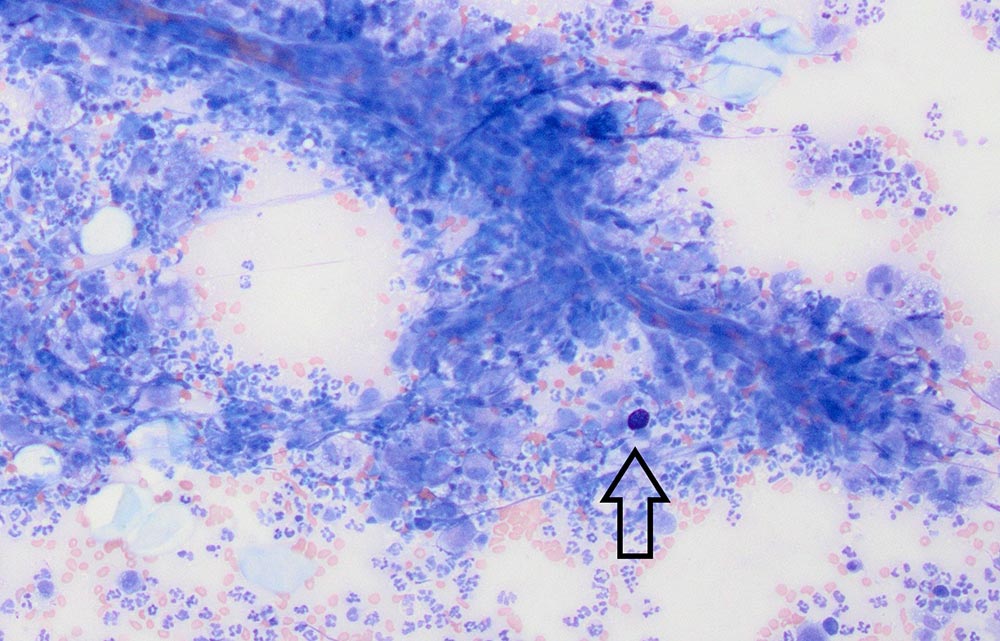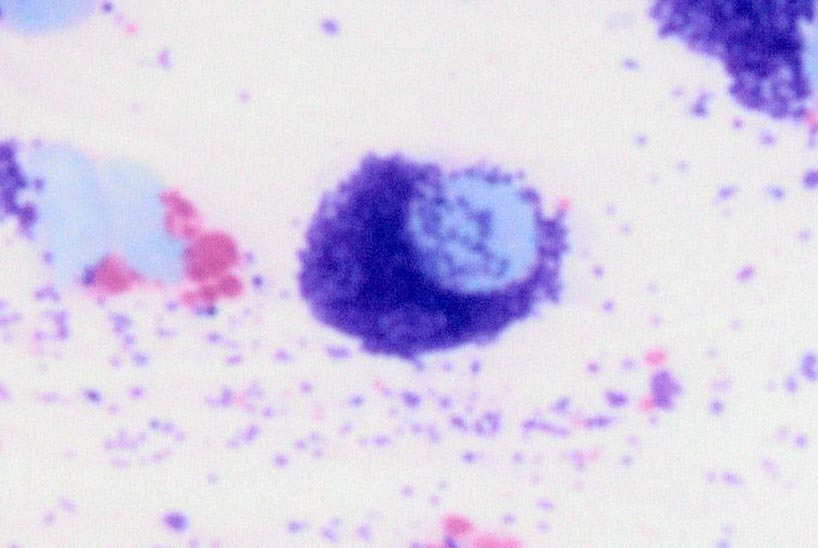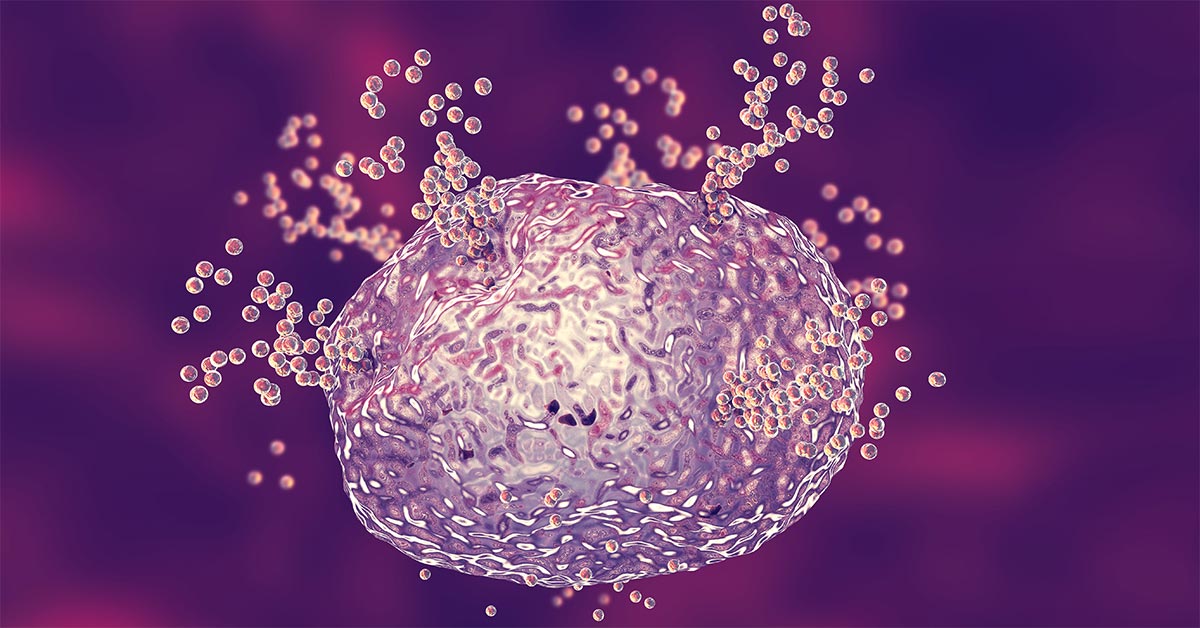Some cytologists love mast cells. They’re very distinctive – and there’s a lot to be said for finding something instantly recognisable and relatively simple to report at the end of a long day trying to work out if those macrophages are just too extreme, or getting frustrated at how difficult it can be sometimes to tell the difference between neutrophils and eosinophils even though one of them is full of big red blobs.
You can spot mast cells from a mile away (all right, all right, from the 10× objective) and you can be pretty sure you know what you’re dealing with very quickly. I understand why they’re popular among my peers.
Not with me, though.
Big purple blobs
On the face of it, I should love them, too. They’re my favourite colour, for one thing (not least when stained with Wright’s stain) – they’re big purple blobs (the less charitable among you may argue that almost everything in cytology is a purple blob, but actually most of the cells we look at are blue or pink – I promise).
The reason they are – and the reason they’re very distinctive – is that they’re jam-packed with granules.
Look, I’ll show you how easy they are to spot. Here’s a picture of a some very inflamed tissue (a ruptured epidermal inclusion cyst, in this case) – it contains loads of macrophages and neutrophils, a great big capillary and, visible from space:

Not exactly subtle, are they? The reason they’re prominent purple blobs is that they are packed with little purple granules. Here, have a closer look:

And this is where my problems with mast cells start.
Time bombs
When I see mast cells, I don’t relax. Maybe it’s because I get hay fever – but they make me think of a sack of angry wasps.
Mast cells may look pretty, but they’re teeny, tiny time bombs, primed to fire out their granules when they come across something they don’t like. Or if you fiddle with them too much. Or just look at them funny.
Those granules are little packets of trouble. When released, among other things, those granules cause inflammation. Blood vessels swell up and the tissue starts to fill with fluid. The granules make you itch. If enough of them are present, they make you hurt. And if there are really, really enough of them, they can cause you very serious problems indeed.
There’s little I like more in cytology than anthropomorphising the wondrous little cells I am lucky enough to get to look at all day. I’ve talked about how neutrophils are foot soldiers, how eosinophils are the “Howling Mad” Murdock of the immune system, and how lymphocytes are… er… Bridget Jones.
On our side…
When I was planning this blog I was trying to think of what mast cells made me think of (other than making me nervous). My son is obsessed with Minecraft currently, which means the first thing I thought of was a creeper – for the uninitiated, these are phallic-shaped green monsters than run up to you and explode, taking most of the house you’ve spent the best part of an afternoon building with them as they go.
That’s not quite right though. You see, despite making me nervous (and sneeze a lot in the summer), mast cells are technically on our side, unlike the annoying and disturbingly shaped Minecraft mobs (monsters). Plus, unlike neutrophils, they’re not one-shot wonders. They don’t die when they degranulate, they just make more of them.
Mast cells are more like Anger from the wonderful Pixar movie Inside Out, crossed with R Lee Ermey’s terrifying drill sergeant from Full Metal Jacket. In my oft-imagined 80s military buddy movie about the immune system, mast cells are the soldiers that sit on their own in the mess hall, nursing a beer with a barely suppressed expression of rage. You know you need them, but you’re always on eggshells around them, just in case you say the wrong thing, or look at them in the wrong way, and… boom, boom, boom.
You’re just glad they’re on your side.
Of course, the problem with mast cells is that sometimes, they really aren’t on your side at all. Next time, we’re going to talk about what happens when mast cells go wrong. For now, have another look at those mast cells above. I swear if you look at them long enough you can hear a faint, angry buzzing…

Leave a Reply